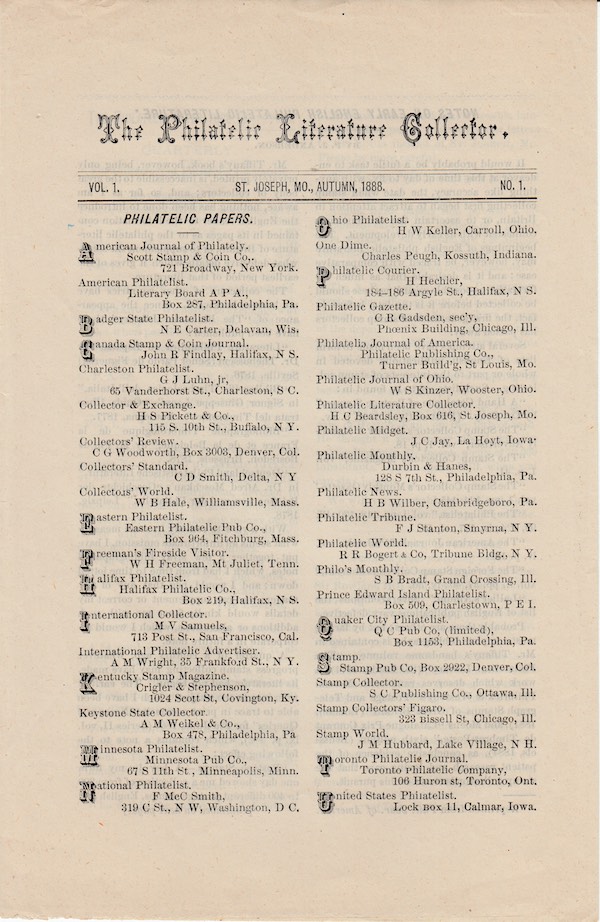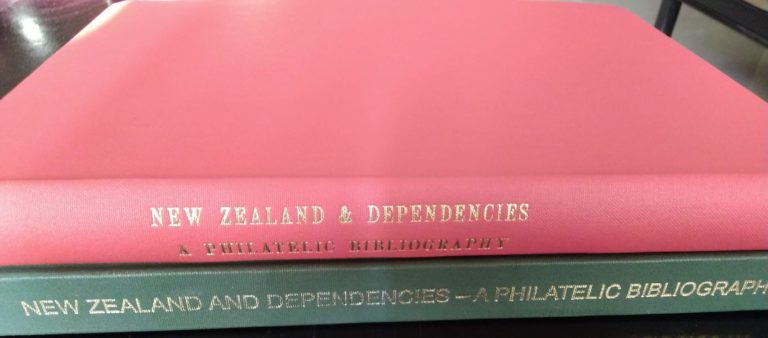It is generally recognised that the first journal dealing exclusively with the topic of philatelic literature is The Philatelic Literature Collector (Figure 1) whose first (and only) issue came out in the Autumn of 1888. As the editorial in that first issue says:
With this number, we present to our readers….a new venture in the way of philatelic literature, devoted to collectors of philatelic literature.

This journal’s editor and publisher was one Mr. Herbert. C. Beardsley of St. Joseph, Missouri. He was a dealer and collector; in fact in this number he claims to be the only collector in his city of 75,000 inhabitants! While I have not researched on him much, I can glean from the Crawford Catalogue that his initial venture, Beardsley’s Advertiser, saw its first and last issue in January that year. The failure of his first two ventures seem to have affected him for a short while only as he is associated with other publications in the mid to late 1890s.
Mr. Beardsley mentions somewhere,
we don’t expect to make any money out of it, we will guarantee every person who sends his or her 10c, four numbers.
I wonder if subscribers or future advertisers were refunded back their amounts given that no further issues saw the light of the day!
The issue in discussion is a self-bound work of 4 pp. The first page lists philatelic magazines being currently published in America. The second and part of the third page contains extracts from P. J. Anderson’s Notes on Early English Philatelic Literature and is acknowledged as being reprinted from the Philatelic Journal of America; in fact Anderson’s article had originally appeared starting from the May 1885 issue of The Philatelic Record, perhaps the best magazine of its time.

The next two pages contain advertisement rates, general notes and titbits on the then philatelic happenings, a small list of literature collectors, an exchange section for journals, and last and definitely not the least, an announcement of an auction sale of 23 different journals. This is possibly the first auction ever held containing exclusively literature lots (Figure 2).







